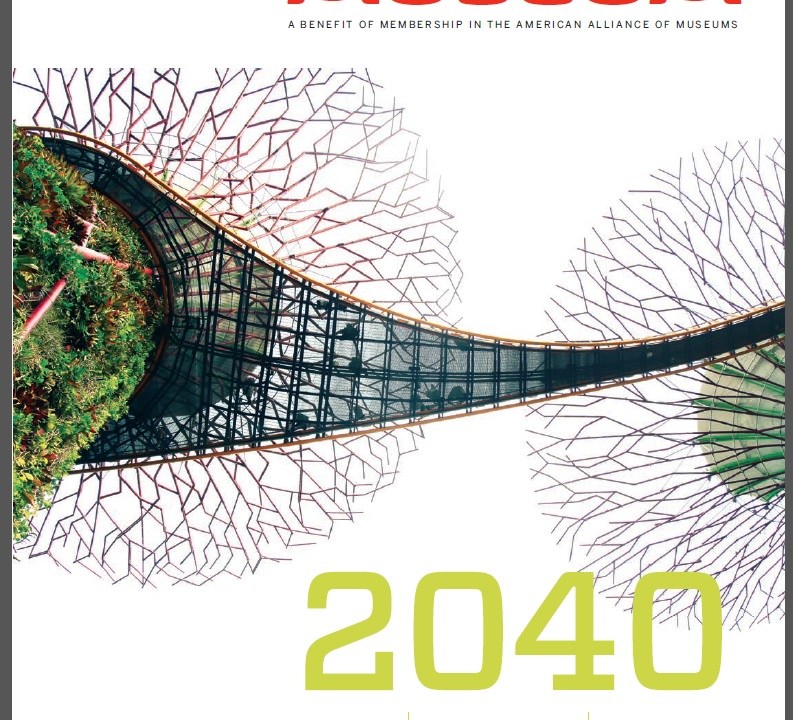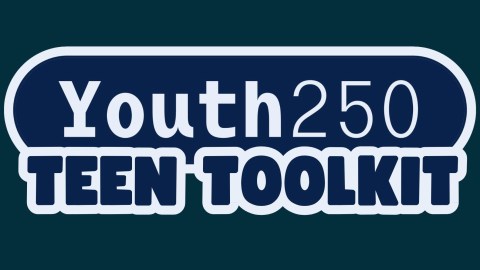
I hope you’ve had a chance to read your print copy of Museum 2040, or to download a digital copy. If you’re a little confused about why the magazine is set in the future, read my introduction to this special issue. As I noted in that post, one of the hardest things to project is the rate of adoption of a given technology. (Roy Amara at the Institute of the Future encapsulated this truth in Amara’s Law, which states that we tend to overestimate the impact of new technology in the short term, underestimate it in the long term.) Today Tiffany Fredette, offline marketing and graphics specialist at Displays2go, offers her thoughts on how far some relatively new technologies will have evolved in by the year 2040. Displays2go is one of the advertisers supporting this special issue of Museum magazine.
In the year 2040, “the internet of things” will no longer be a talking point—this technological network will practically be interlaced with our DNA. Trillions of connected devices will be transmitting and gathering data seamlessly behind the scenes. Augmented and virtual reality will be a part of everyday life, not just something to experience via a cool gadget select friends or relatives may have. Together, these advances will transform what it means to “visit” a museum.
Even before you enter a museum or gallery, your devices will be gathering data based on your conversations at home. When you remark to your partner, “We should really take the kids to the Museum of Science,” your personal artificial intelligence assistant will start checking calendars, schedules, modes of transportation, and the interests of your family members. Knowing that Tommy loves dinosaurs, it will notice the upcoming opening of a new fossil exhibit. It will scan for days when you have no meetings scheduled for work, and cross-check traffic projections. By the time you ask, “When’s a good time to go to the Museum of Science?” it will promptly reply “Friday, the 24th of next month, at 2 pm.”
Connected devices will be directly integrated into the fabric of museums and exhibits of every kind. When patrons walk through the doors with their own connected devices, the transfer of information will happen unobtrusively. Museums will use the collected data to personalize the experience of any patron that visits for a tour. Don’t like to read the labels? No problem – an audio clip will play as you stop in front of the artwork. Not sure of the time period in which the work was made? Simply look at the art and ask, “When’s this from?” aloud—the audio will play automatically. Want to experience a museum visit the ‘old-fashioned way’, i.e. a very basic walking tour? Then that’s what will be offered to you because the museum will have saved your preferences from previous visits.
How will augmented and virtual reality come into play? Of course, people will still make traditional trips to a museum. But what if you wanted to visit, without physically going anywhere? Those same connected devices will be your guide and mode of “transportation”. By 2040, virtual assistants will be a ubiquitous home appliance. Simply saying “Virtual assistant, bring me to the Max Ernst exhibit at the museum” will transform the space before you with a high-resolution hologram. Or synch with your virtual reality glasses, and you’ll be immersed in the exhibit without having to leave your front door. By 2040, VR may stimulate all five senses. Imagine being able to smell a botanical garden 3,000 miles away!
School field trips to museums will be completely reimagined as well. No need to bus 50 or more students an hour away, wasting gas and spewing hydrocarbons. With virtual reality, teachers can take the children on an adventure without having to leave the school building. Putting culture and immersive history at students’ fingertips (via haptic gloves!) will enable us to increase the knowledge and appreciation of generations to come.
What will this mean for museums themselves? Will staff be downsized, and some positions become extinct? Perhaps, but new jobs may be created. Will some museums be forced to close? Probably not. The rise of virtual visits will only highlight the multisensory advantages of going to a museum IRL (in real life). Just as the rise of digital retail is leading stores to emphasize the pleasure of actually seeing, feeling, and touching items; museum visits will emphasize on-site experiences. Virtual and augmented reality will represent merely an alternative option. Physical institutions will still appeal to the human element; even as they enhance their exhibits with dynamically interactive, digitally transformed presentations.
Museums and places of culture will always have a place in the world. As with anything, staying ‘up with times’ is the key to their continued success. What will a museum look like in 3010? Now that is beyond my comprehension. What I do know, is that companies like Displays2go are in it for the long term. We’re here to support the needs of the modern museum, and we’ll continue advancing our offering to meet those needs into the future.








